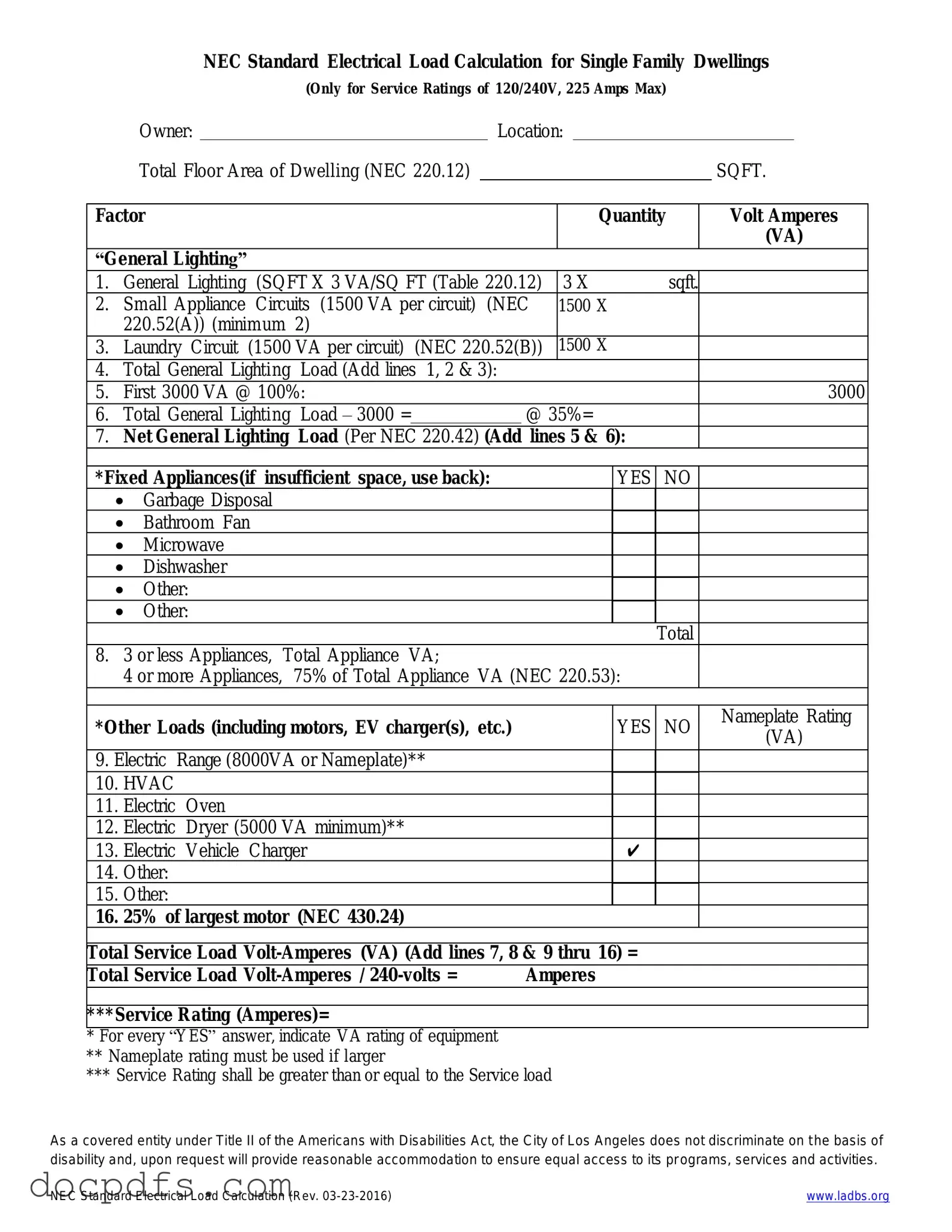The LADBS NEC Standard Electrical Load Calculation form is a document used by electrical engineers and contractors to determine the expected electrical load for a building or facility. This form helps ensure that the electrical system is adequately designed to handle the load, promoting safety and compliance with local regulations. By calculating the load accurately, it minimizes the risk of electrical failures and hazards.
This form must be completed by licensed electrical contractors or engineers when submitting plans for new electrical installations or modifications to existing systems. Homeowners may also need to provide this information if they are undertaking significant electrical work. It is essential for anyone involved in the design or construction of electrical systems to understand the requirements of this form.
The form requires various details about the electrical system, including:
-
Type of occupancy (residential, commercial, etc.)
-
Total square footage of the space
-
Types of appliances and equipment to be used
-
Estimated demand for each type of load
-
Any special considerations, such as future expansions or unique electrical needs
Gathering accurate information beforehand will facilitate a smoother completion of the form.
How is the electrical load calculated?
Electrical load calculations involve determining the total demand for all electrical devices and systems within the space. This includes both continuous and non-continuous loads. The National Electrical Code (NEC) provides guidelines on how to calculate these loads, considering factors like:
-
Wattage of individual devices
-
Simultaneous usage of devices
-
Demand factors for specific types of loads
By following these guidelines, the calculation helps ensure that the electrical system can safely accommodate the anticipated usage.
Once the form is completed, it should be submitted to the Los Angeles Department of Building and Safety (LADBS) as part of the permit application process. It is advisable to check the LADBS website or contact their office for specific submission guidelines, including any required documentation and fees associated with the permit application.
If the form is not completed correctly, it may lead to delays in the permit approval process. The LADBS may request revisions or additional information, which can prolong the timeline for project commencement. In some cases, failure to provide an accurate load calculation could result in safety hazards or code violations, leading to potential fines or required modifications to the electrical system.
